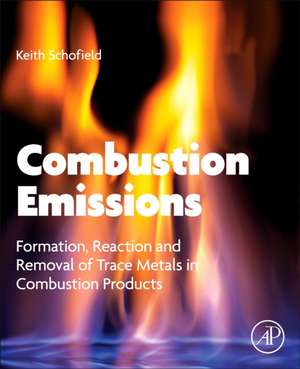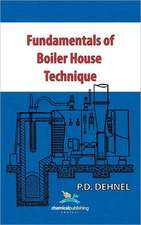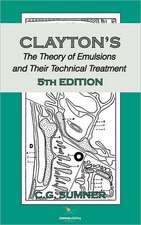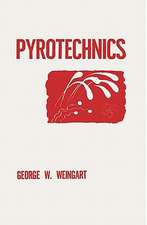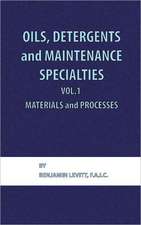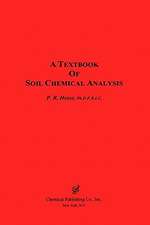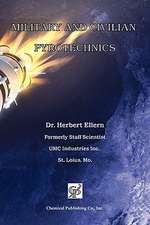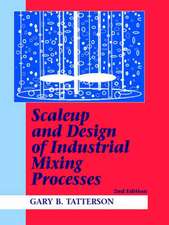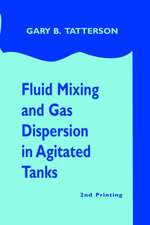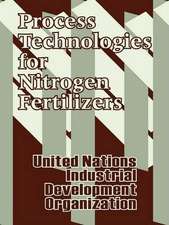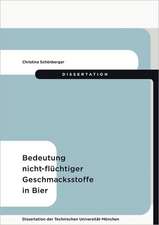Combustion Emissions: Formation, Reaction, and Removal of Trace Metals in Combustion Products
Autor Keith Schofielden Limba Engleză Paperback – 9 noi 2020
Societal impacts and environmental concerns are considered throughout, highlighting sustainability aspects across a diverse range of applications, such as within power plants, automobiles and propulsion.
- Presents the latest research in a very systematic way
- Includes methods of control and establishes a base of understanding for future research in energy systems
- Analyzes the individual behavior of 34 elements, considering their chemistry, nature and environmental impacts
Preț: 829.48 lei
Preț vechi: 1316.04 lei
-37% Nou
Puncte Express: 1244
Preț estimativ în valută:
158.77€ • 172.52$ • 133.45£
158.77€ • 172.52$ • 133.45£
Carte tipărită la comandă
Livrare economică 14-28 aprilie
Preluare comenzi: 021 569.72.76
Specificații
ISBN-13: 9780128191262
ISBN-10: 0128191260
Pagini: 612
Dimensiuni: 191 x 235 mm
Greutate: 1.03 kg
Editura: ELSEVIER SCIENCE
ISBN-10: 0128191260
Pagini: 612
Dimensiuni: 191 x 235 mm
Greutate: 1.03 kg
Editura: ELSEVIER SCIENCE
Public țintă
Engineers working in energy and combustion, scientists in high-temperature energy settings, those concerned with environmental pollution and waste disposal, researchers of alternative fuels for energy.Cuprins
1. Introduction
2. Recent concepts
3. The generalities that now are apparent
4. The importance of temperature, interaction time and heterogeneous collision frequency constraints: fuel-rich or -lean differences
5. The nature of flame gases free of non-metallic content
6. The role of particles, ash or surfaces
7. Trace species reported combustion behavior and the chemistry within the modern framework of understanding
8. Summary and conclusions
2. Recent concepts
3. The generalities that now are apparent
4. The importance of temperature, interaction time and heterogeneous collision frequency constraints: fuel-rich or -lean differences
5. The nature of flame gases free of non-metallic content
6. The role of particles, ash or surfaces
7. Trace species reported combustion behavior and the chemistry within the modern framework of understanding
8. Summary and conclusions
Recenzii
"Understanding the mechanisms of emissions of trace metals from solid fuel combustion systems and its control is of immense importance in the design and operation of thermal power plants and equipment for process industries. The book under review by Keith Schofield provides a comprehensive overview of this subject." --Current Science
"In the first part, the commonalities of the behaviour of various trace metals in combustion systems are discussed. It is in these six chapters lie the greatest strength of the book. The first part of the book is ideally suited as a text/reference for graduate level courses dealing with combustion and emissions.
The rest of the book contains a detailed discussion of the behaviour of a large number of trace metals in combustion processes. This part of the book will be a valuable source of information on the known aspects, open questions and ongoing studies. An exhaustive list of references including studies as recent as 2019 is included, making this book a ready reference for students as well as practising engineers.
Overall, the book is a welcome addition to the combustion literature." --CURRENT SCIENCE, VOL. 120, NO. 3, 10 FEBRUARY 2021
"In the first part, the commonalities of the behaviour of various trace metals in combustion systems are discussed. It is in these six chapters lie the greatest strength of the book. The first part of the book is ideally suited as a text/reference for graduate level courses dealing with combustion and emissions.
The rest of the book contains a detailed discussion of the behaviour of a large number of trace metals in combustion processes. This part of the book will be a valuable source of information on the known aspects, open questions and ongoing studies. An exhaustive list of references including studies as recent as 2019 is included, making this book a ready reference for students as well as practising engineers.
Overall, the book is a welcome addition to the combustion literature." --CURRENT SCIENCE, VOL. 120, NO. 3, 10 FEBRUARY 2021
